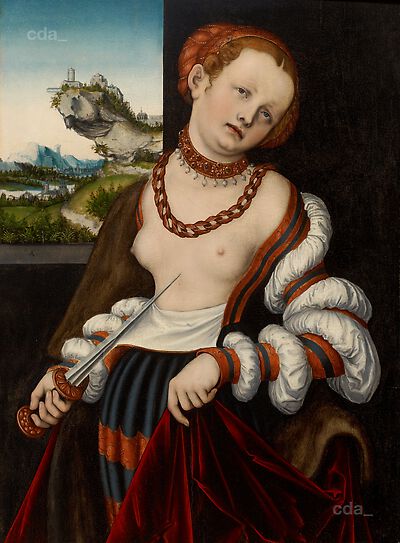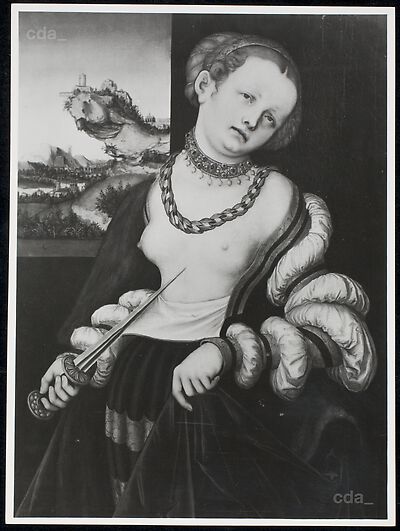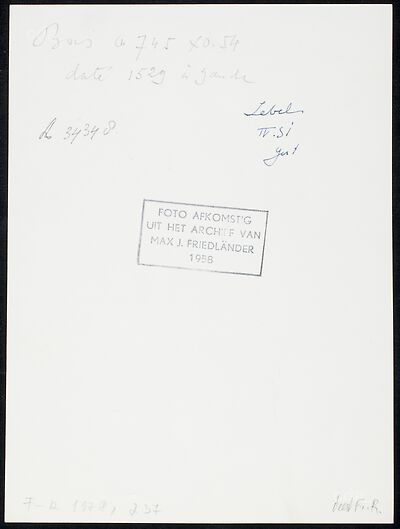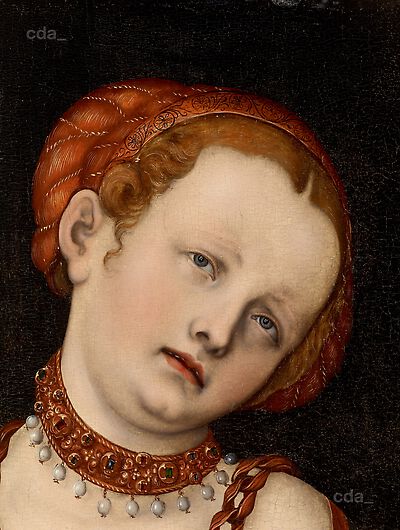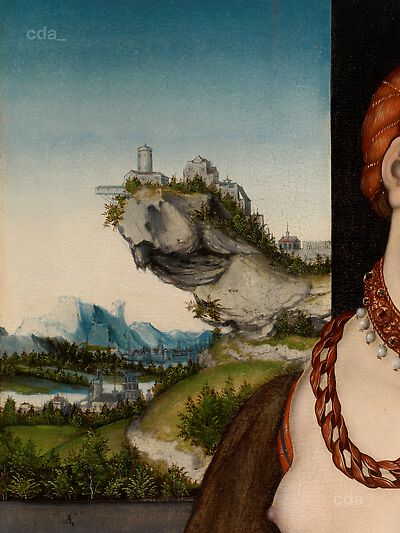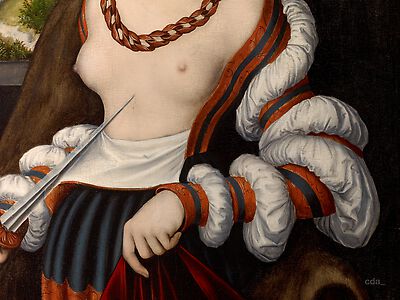- Attribution
- Lucas Cranach the Elder
Attribution
| Lucas Cranach the Elder | [Sarah Campbell Blaffer Foundation, revised 2014] Certificate by Max J. Friedländer, 5 August 1957, now lost. |
- Production date
- 1529
Production date
| 1529 | [dated] |
- Dimensions
- Dimensions of support: 75 x 54 cm (29 ' x 21 ' inches)
Dimensions
Dimensions of support: 75 x 54 cm (29 ' x 21 ' inches)
[Sarah Campbell Blaffer Foundation, revised 2014]
- Signature / Dating
Artist's insignia on the window ledge: serpent with elevated wings and dated '1529'
Signature / Dating
Artist's insignia on the window ledge: serpent with elevated wings and dated '1529'
[Sarah Campbell Blaffer Foundation, revised 2014]
- Owner
- Sarah Campbell Blaffer Foundation, Houston
- Repository
- Sarah Campbell Blaffer Foundation, Houston
- Location
- Houston
- CDA ID
- US_MFAH-SCBFH-1979-2
- FR (1978) Nr.
- FR237
- Persistent Link
- https://lucascranach.org/en/US_MFAH-SCBFH-1979-2/
